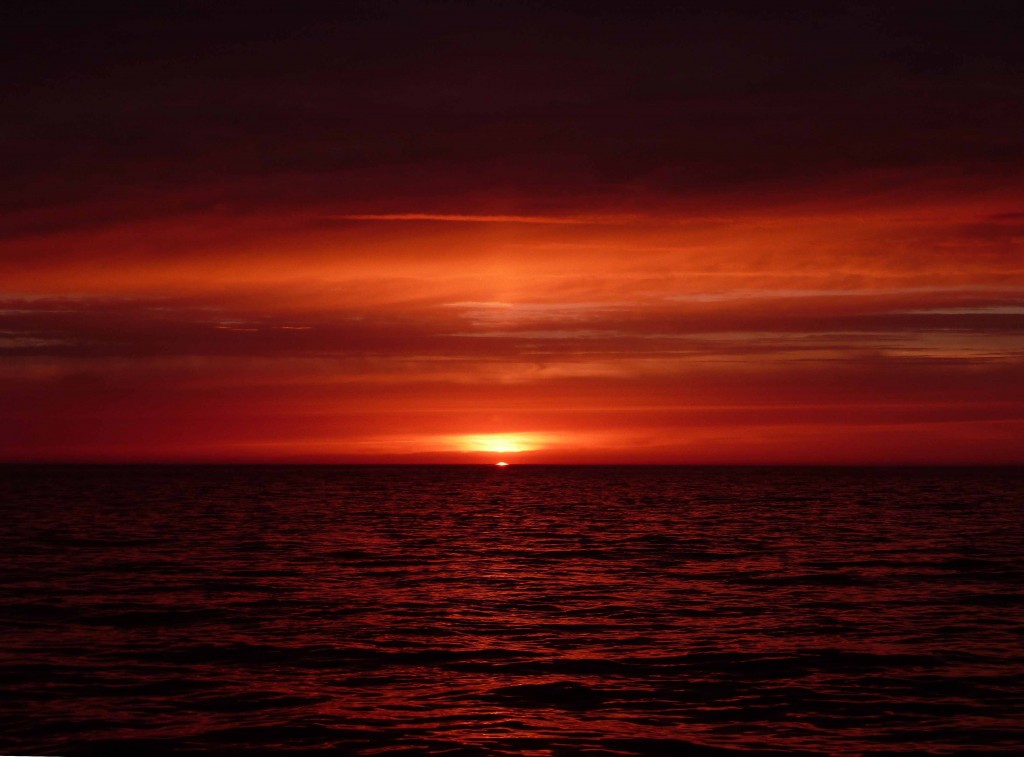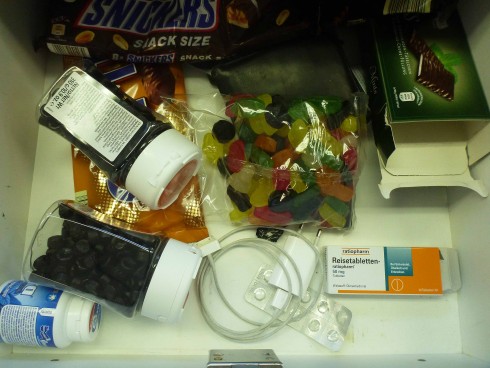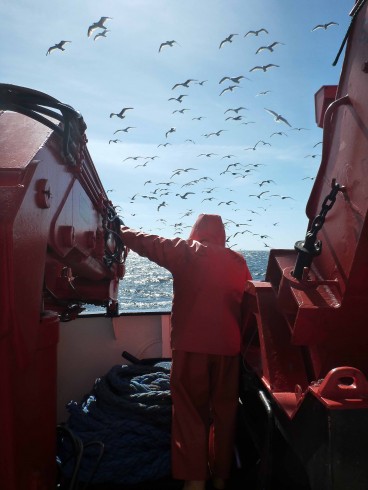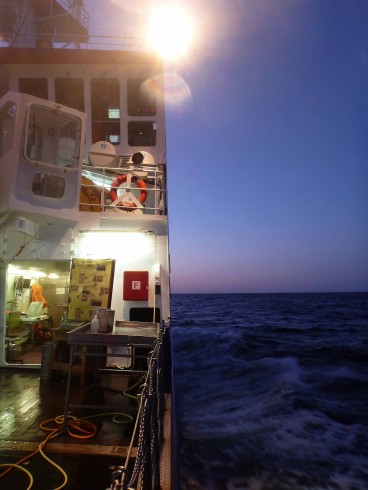Hello again, here is my last post on this blog for a while.
While I am writing these words safely on land, enjoying my weekend, RV Alkor has left on the second of our annual “Integrative Baltic Time Series Analysis” cruises this morning, with a scientific agenda similar to the one in April but a new team of scientists (though including several of the April gang) on board.
Time since the arrival of AL454 was short for everyone involved in planning and even more so for those participating in both cruises – checking the functionality of gear, filling up stores of disposable materials, getting the new crew ready and the work planned, catching up on sleep, loading the ship.
And now the May cruise AL457 has started, two more weeks of intense work, hopefully lots of fun, and new observations and samples from the Baltic Sea. All the best to all of you on board, I look forward to your posts on this blog and to the stories after your return (and will be on board at least mentally regularly, even if I am not participating this time)!
Jan
PS: To close, some final impressions from AL454.
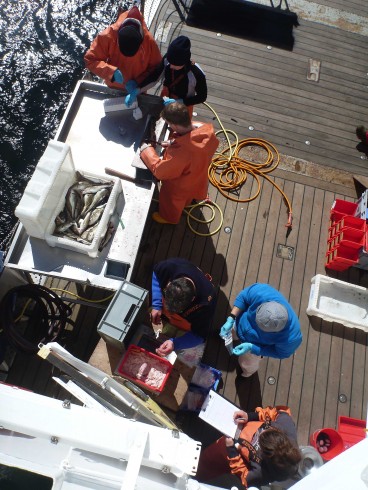
All hands at work. Measuring and taking samples of cod, one of the key species both from a commercial and ecological perspective, and a key target species of our cruises scientifically. Fish are measured, and gonad and stomach samples (bottom group), and tissue and otolith samples (top group) are taken for further ecological and genetic analyses in the laboratory after the return home. Photo: Jan Dierking
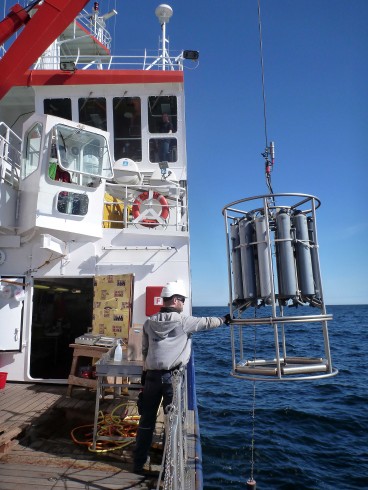
The water sampler ready for action. Each of the bottles can be filled with water samples at a different depth, as determined by the controller sitting in front of a computer on board. This allows the sampling of plankton and of water for the calibration of oxygen sensors in different depth layers. Photo: Jan Dierking
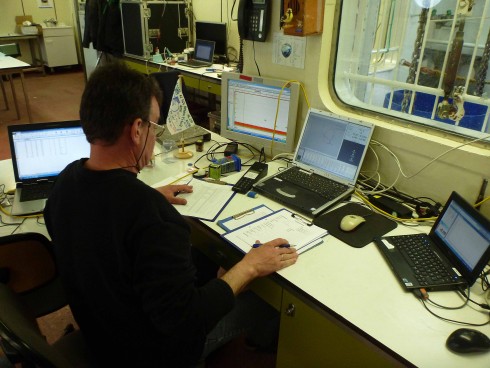
Equipment control, advanced level. Monitors showing the depth at which the scientific equipment is positioned, and the data that are coming in. Photo: Jan Dierking
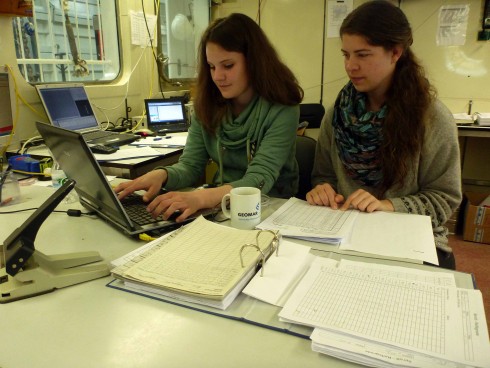
Data data data – 12 scientists working shifts around the clock produce a lot of data, so one of the key tasks on board is to stay on top of the data entry to digitalize everything and make sure that nothing is lost. Photo: Jan Dierking
